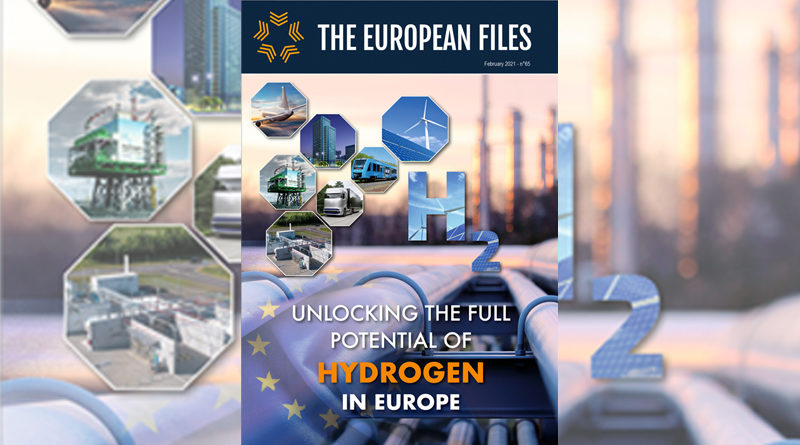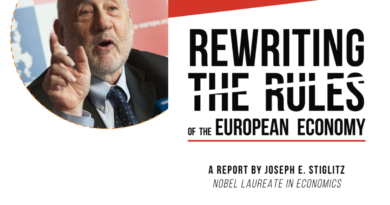
Unlocking The Full Potential Of Hydrogen In Europe
Hydrogen is a highly abundant component of the universe and is currently enjoying unparalleled momentum in Europe and around the world. With its ambition to achieve climate neutrality by 2050, Europe needs to speed up its energy transition and reduce by at least 55% its greenhouse gas emissions over the coming decade.
The transition towards a low-carbon economy is both an imperative challenge and a great opportunity to build a better future for our society. Clean hydrogen, whether blue or green, can indeed play a critical role in the decarbonisation path.
Hydrogen can enable economic sectors, in particular power generation, industries, transport, and buildings to substantially reduce their carbon footprint. Today, hydrogen production has a high environmental footprint because it mostly comes from fossil fuels. According to the International Energy Agency, hydrogen is responsible for around 830 million tonnes of carbon dioxide per year.
The challenge is to scale up clean hydrogen produced from zero-emission electricity such as renewable and nuclear energy, and accelerate the deployment of hydrogen-based applications. Two other important challenges are to make clean hydrogen economically viable by lowering the costs of the electrolysis process and developing hydrogen transport infrastructure.
Europe is at a turning point to make the hydrogen economy a reality. With the publication of its Strategy for Hydrogen last summer, the EU laid out its vision to support the growth of clean hydrogen, outlined a number of key actions, and presented three strategic phases in the timeline up to 2050.
Hydrogen, which currently accounts for less than 2% of Europe’s energy mix, is expected to represent around 14% by 2050. The roadmap aims at establishing a framework that will enable a functioning hydrogen market.
The launch of the Clean Hydrogen Alliance which gathers together major players from the whole value chain – from production to application – will facilitate the necessary investment to help the scaling up of hydrogen technologies across the continent.
Regarding the legislative process, the Council adopted its conclusion in December calling on the Commission to further elaborate and operationalise the EU Hydrogen Strategy while the European Parliament is expected to adopt its position in Spring. This may lead to intense – but interesting nonetheless – political debates.
In this edition of the European Files, we explore the potential for a hydrogen-powered future in Europe through the perspective of policymakers and businesses. Their contributions analyse the existing economic and political hurdles and recommend policy incentives that will enable the upscaling of clean hydrogen technologies and support the transition towards a low-carbon economy.
Editorial by
Laurent Ulmann &
Cyrille Mai Thanh
Editor-in-Chief
Laurent ULMANN
- Renewable Hydrogen: A Key Driver for Europe’s Energy Transition
, European Commissioner for Energy - From Ambition to Action: Enabling Europe to Become a Global Leader in Hydrogen Technologies
, European Commissioner for Internal Market - The New Decarbonised Hydrogen Economy: a Growth Engine in a Post-Covid Europe
, French Minister of Economy, Finance and Recovery - The Portuguese Hydrogen Strategy to Decarbonise its Economy: The Project to Produce Green Hydrogen by Electrolysis
, Portuguese Minister of Environment & Climate Action - How Renewable Hydrogen Will Help Descarbonise the European Economy The Case for Spain
, Vice-President Government of Spain and Minister for the Ecological Transition and the Demographic Challenge - Global cooperation is essential for realising hydrogen’s huge potential
, Executive Director of the International Energy Agency - Building an investment case for hydrogen
, Vice President of the European Investment Bank - Deploying Clean Hydrogen Energy for a climate-neutral Future
, MEP (S&D, Germany), Rapporteur on the Hydrogen Strategy, Member of the ITRE Committee, European Parliament - Hydrogen – Making Europe a leader in each segment of this strategic value chain
, Executive Vice President ENGIE - Directing Public and Private Investments Towards Hydrogen Production
, MEP (EPP Group), Shadow rapporteur on the Hydrogen Strategy, Member of the ITRE Committee - Low-carbon electrolytic hydrogen: a win-win for climate and energy system integration
, Chairman and CEO of EDF - The switch from natural gas to green hydrogen, and its importance for climate change promises
, MEP (Renew Europe – Denmark), Vice-Chair ITRE Committee - A Danish perspective on a clever deployment of Hydrogen
, Director General of the Danish Energy Agency - The International Dimensions of the European Hydrogen Strategy
, MEP (EPP Group), Member of the ITRE Committee - Natural Gas and Hydrogen: Bridging the Regulatory Gap
, Secretary General Eurogas - Towards greater hydrogen production capacity in Europe
, International Association of Oil & Gas Producers, Regional Director Europe
, Vice President Political and Public Affairs – Global Head of EU Affairs / Country Manager Belgium, Equinor Energy Belgium NV - Why Europe Needs Targets for Hydrogen Energy Infrastructure Rollout
, MEP, EPP ITRE Coordinator - Hydrogen valleys driving growth and jobs
, Executive director of the Fuel Cells and Hydrogen Joint Undertaking (FCH JU) - The scaling up of hydrogen, a European task
, MEP (S&D group), Member of the ITRE committee - The future of Hydrogen under the Green Deal ambitions
, MEP (EPP – ND Greece) Member of ITRE Committee, European Parliament - Hydrogen : Time to scale up !
, Executive Vice-President Member of the Executive Committee AIR LIQUIDE - Changing the ground for a competitive hydrogen ecosystem in Europe
, Secretary General of Hydrogen Europe - Full speed ahead: Developing European Infrastructure for Hydrogen
, Chief Executive Officer, Energinet Gas TSO and President of Gas – Infrastructure Europe (GIE) - Towards a Continent Powered by Clean Electricity: Leading the Charge on Hydrogen
, Secretary General of Eurelectric - Hydrogen Strategies and The Importance of Solving the Dual CO And Methane Performance Challenge
, MEP (S&D, Spain), Member of the ITRE Committee, European Parliament - Hydrogen’s role to decarbonise the European gas grid
, General Director of ENTSOG - Hydrogen as One of the Solutions for the Decarbonisation of Transport
, MEP (Renew Europe, Finland), Member of the TRAN Committee, European Parliament - Green Hydrogen – The dream of energy transition or just a fade? What does it take to meet the high expectations of a European hydrogen market?
, MEP (Renew Europe Group), Vice Chair of TRAN Committee - Hydrogen: Promising Zero-Carbon Technologies for Future Aircraft
, Executive Director – Clean Sky Joint Undertaking - Hydrogen – the Great Unifier?
, President of the Solar Impulse Foundation - Green Hydrogen for a carbon neutral transport sector
, MEP (S&D, Germany), Member of TRAN & ITRE Committees, European Parliament - When hydrogen partners with electrons: clean heating for all
, Co-CEO Viessmann Group and CEO Viessmann Climate Solutions - Hydrogen blending standards: is harmonisation needed?
, Florence School of Regulation – Robert Schuman Centre for Advanced Studies at the European University Institute
, Florence School of Regulation Robert Schuman Centre for Advanced Studies at the European University Institute - Clean Hydrogen as A Major Enabler for Making Carbon-Free Ammonia and Fertilizers
, Technical Director, Fertilizers Europe - Unlocking the Green Hydrogen Economy through Business Model Innovation
, CEO of EIT InnoEnergy - EU Hydrogen at a crossroads: how to gear up?
, Vice-President of Renew Europe Co-chair of the intergroup on long-term & sustainable investments & Competitive European Industry - Innovation – a key driver of the EU Hydrogen Economy
, Director-General Joint Research Centre, European Commission - How can carbon-free hydrogen become more competitive?
, MEP (Renew Europe Group), Member of the ITRE Committee - Clean Hydrogen costs in 2030 and 2050: a review of the known and the unknown
, Research Associate – Florence School of Regulation
, Director – Florence School of Regulation - Hydrogen will not be the new oil of the XXI century
, President – The Shift Project
, Director – The Shift Project



